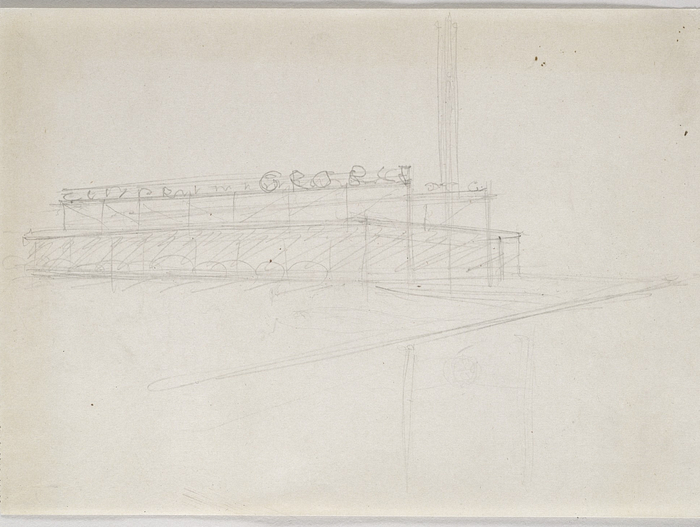Member-only story
When Mies designed a drive-in
Fast food never had it so good.

As I’ve often claimed, designing a gas station (a prototype, say, for a national brand rollout) would have more impact on more people than any museum or city hall or library ever could. If the success of architecture is measured by the number of people’s lives improved (and why not) you simply can’t beat mass market design, in whatever form it takes. It may not make the history books, but in terms of pure transformative power it is unequalled.

Given that, I’m not sure how I missed the (unbuilt) fast food drive-in that Mies van der Rohe (yes, that MvdR; of Barcelona Chair, Seagram Building and Farnsworth House fame) designed for an Indianapolis restaurant and theater owner. Then there’s that gas station outside Montreal, which was actually built and survives as (perhaps more appropriately) a community center. And the glass house for the owner of the fast food joint (not built, though it would have preceded the Farnsworth House). And these were not just throw aways; any of them fully realized would have shifted not only the history of architecture, and Mies’s place in it, but the panorama of the American roadway.

Joseph Cantor, who owned drive-ins, movie theaters and roller rinks in Indianapolis, said “the best architect in the world doesn’t charge me more than any other architect” and hired Mies. I certainly hope that’s not true, but in those days there was a schedule of fees ‘suggested’ by the AIA that defined acceptable percentage fees architects could charge. In 1971 that was deemed to violate the Sherman Act (anti-trust laws) but the idea that the best architect in the world charged no more than the worst is offensive to my sense of meritocratic achievement. Not to mention market forces.


